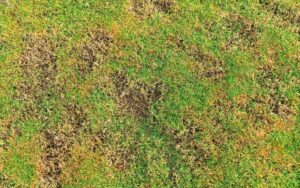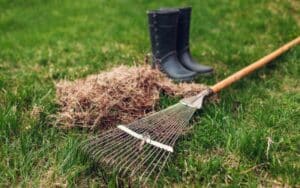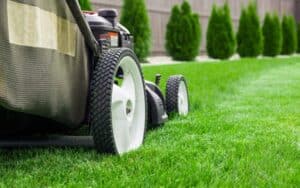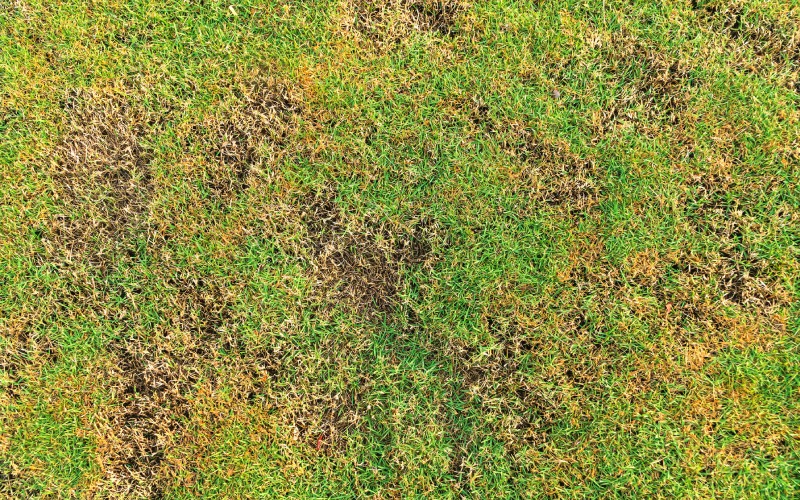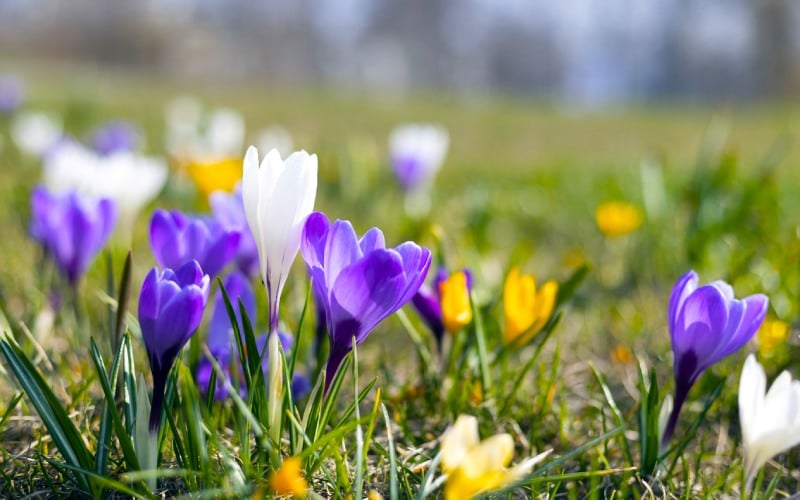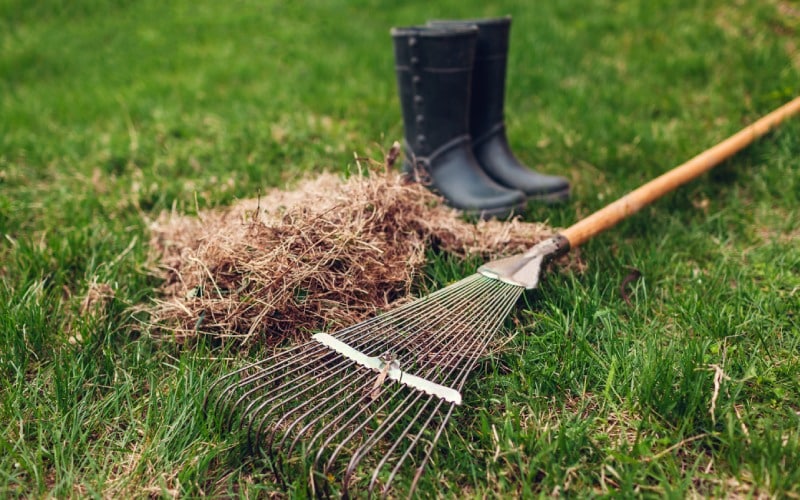Ever wondered when to start your spring lawn care? Well, you’re not alone. Most of us are lawn care novices when we first start out. But remember, learning about lawn care is a bit like an apprenticeship – you learn by doing.
This year the spring season officially began on March 19th. But, your lawn doesn’t follow the calendar. It’s all about getting your timing right, and that’s what we’re here to help with.
Whether you’re a beginner or an intermediate gardener, there’s always something new to learn. So, don’t be afraid of making mistakes. After all, even the most beautiful lawns are the result of trial and error.
Key Considerations for Spring Lawn Care
Assessing the Condition of Your Lawn
First off, you need to assess the overall condition of your lawn. It’s important to understand what you’re working with before moving forward with your lawn care routine. Start by identifying the problems. Broadleaf weeds, crabgrass, or bare spots can indicate unhealthy soil or inadequate sunshine.
Thatch build-up is another common issue to watch out for. If you have a half-inch or more of old thatch, remember, excessive thatch can be a breeding ground for common lawn ailments, such as sod webworm and powdery mildew. Working this down to a quarter inch or so can significantly improve your lawn’s health.
Just after the thatch has dried, give your lawn a good rake, particularly for older lawns. Top-dressing sparse areas quickly before weed seeds germinate can revitalize your lawn for the growing season. To top dress, spread a quarter to half inch of potting soil or mix black dirt with peat moss and sand across sparse patches. Sprinkle seed over the soil to the desired thickness. If you have hungry birds encircling, a bit more soil dusted over the seeds should disguise their lunch.
Setting Realistic Goals
Let’s get into talking about realistic goals for your lawn. Keep in mind, lawn mowing isn’t a one-size-fits-all cultural practice. In fact, each grass type functions best within a certain cutting height range. Sticking within these guidelines can help you maintain a weed-resistant and drought-tolerant lawn.
Here, a handy Mowing Height Chart can make all the difference. Let’s take a look at it:
| Grass Type | Mowing Height (Inches) |
| Bentgrass | 0.25-0.75 |
| Bermuda | 1.5-2.5 |
| Centipede | 1.5-2.0 |
| Fine Fescue | 1.5-2.5 |
| Kentucky Bluegrass | 2.5-3.5 |
| Ryegrass | 1.5-2.5 |
| St. Augustine | 2.5-4.0 |
| Tall fescue | 2.5-4.0 |
| Zoysia | 0.75-2.5 |
Cutting the lawn too short, on the other hand, can invite unsightly turf disease, weed infestation, and cause extreme thinning of the lawn. So, make the proper mowing height one of your priority lawn care goals.
Early Spring: Getting Started
As winter recedes, taking its frigid touch with it, your lawn wakes up from its slumber. But hold your horses! It’s not yet time to revive the green scenery. Jumping in too soon could wind up harming rather than nurturing.
Clearing Debris and Thatch
Spring’s arrival might tempt you to declutter your lawn, but beware, the turf’s not ready for an onslaught of activity just yet. Rule of thumb here is to clear debris and thatch only when the ground is firm enough. Why’s that? Early in spring, your lawn’s condition might be fragile, the soil muddy. If you start raking or walking on it, you risk uprooting the growing grass or causing unnecessary stress on the greenery that’s just getting ready for its big spring debut.
Interestingly, your lawn may harbour what’s called thatch. Dead grass and organic matter that refuse to break down, creating a barrier against water and air. When the ground dries up, it’s time to clear this away by mildly raking the lawn. Go easy, as the new growth and old grass are delicate. Following this practice allows the lawn to breathe again and paves the way for healthy, strong grass.
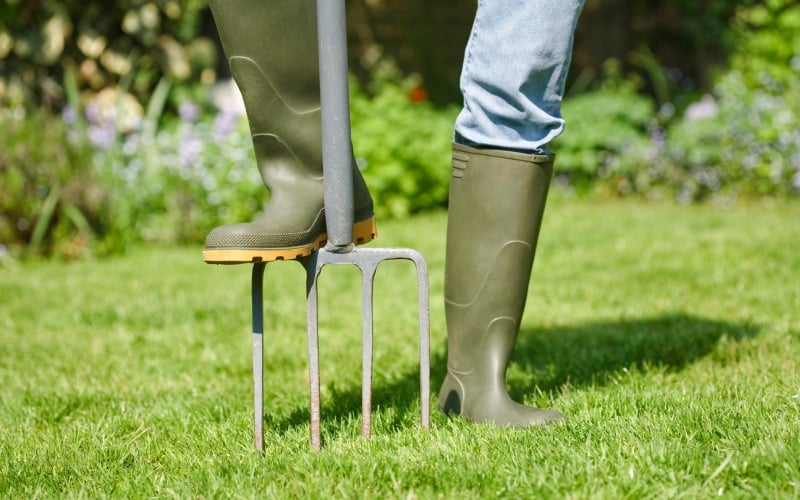
Raking and Aerating
What’s next after clearing away the thatch and debris? Raking and aerating your lawn are the next crucial steps.
When raked, the lawn responds by growing healthier and denser. A word of caution, though: don’t go too hard on raking. You might pull out the grass alongside the thatch. Aim to make your turf neater, not bald!
Aerating gives your lawn that extra breath of fresh air. This process involves removing soil plugs from your yard, facilitating better penetration of water, nutrients, and much-needed oxygen. This practice can be especially helpful if your lawn feels hard and compacted after winter’s freeze. For one-time use, it’s easy to rent core aerators from home improvement stores.
Mid-Spring: Essential Maintenance Tasks
As the spring season progresses, your lawn will begin to reveal the areas that need some TLC. It’s time to jump into essential mid-spring maintenance tasks to give your lawn the boost it requires to flourish throughout the year.
Overseeding and Fertilizing
Look closely; does your lawn have bald patches? Overseeding is your next step. Enhance these bare spots by covering them with a grass seed of your choice, water the newly seeded areas daily for at least a week, or until the grass reaches a mowable height. Mow around these patches until then. Once the new grass is about 2 inches high, you can mow over them and complete the rest of your lawn.
Once you’ve overseeded, it’s time to give your lawn a much-needed boost with the aid of fertilizing. Choose a quality lawn feed tailored for spring use to encourage robust and healthy grass growth. Remember, if you’re using a crabgrass preventer, only use this product if no spring seeding projects are planned to avoid new seedling damage.
Dealing with Weeds and Pests
Moving on to a common enemy, the weeds. Have you noticed any crabgrass on your lawn? If so, tackle this issue by spreading a good crabgrass preventer across your lawn in early spring, before the weed seeds have a chance to germinate.
Remember, as part of your spring lawn maintenance, it’s not only the visible weeds you’ll need to deal with but also the potential pests lurking in the thatch. Excessive thatch can become breeding grounds for sod webworm, powdery mildew and other common lawn diseases.
It’s a good strategy to dedicate your lawn care time in mid-spring, and you’ll see the outgrowth of a stunning, lush green lawn in the summer months. Stay tuned for more tips and tricks for maintaining a healthy and vibrant lawn all year round.
Late Spring: Final Touches and Preparing for Summer
As you transition into the last phase of your spring lawn care, it’s all about fine-tuning your efforts and laying the groundwork for a healthy, lush green summer world.
Mowing and Watering Tips
The art of lawn mowing isn’t a one-size-fits-all approach. It’s an aspect of lawn care deeply intertwined with the type of grass growing in your lawn. Each grass breed has its unique cut-height range, functioning best within those parameters. Staying in line with these guidelines aids in maintaining a weed-resistant, drought-tolerant lawn.
The consequences of not adhering to this rule might be severe, initiating unsightly turf diseases, weed infestations and extreme thinning of the lawn elements you’d rather keep off your lawn.
Mowing at the right height promotes a lush, thick lawn that is more capable of fending off weeds and withstanding drought. Remember, you’re not aiming for a putting green unless, of course, you’re playing golf!
Your watering strategy should also shift with the season. As temperatures begin to rise, deep, infrequent watering encourages deeper root growth and increases your lawn’s resistance to drought.
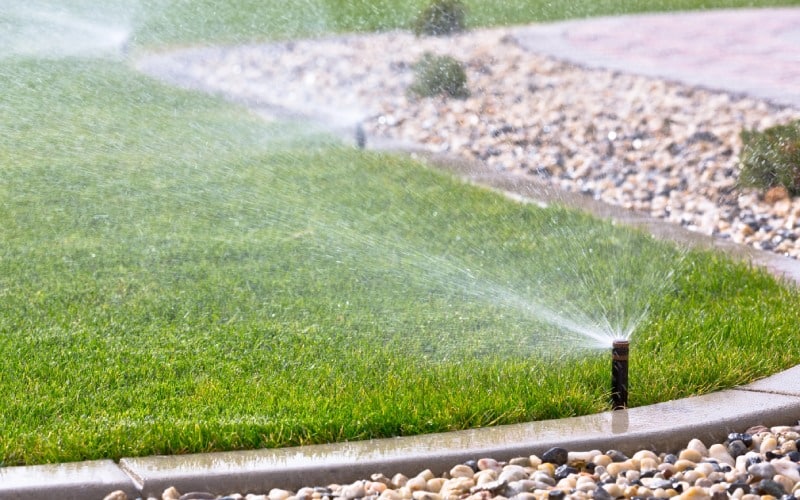
Implementing a Summer Lawn Care Plan
Before you know it, summer will be here. Your late-spring lawn care practices serve as a bridge to your summer lawn maintenance. It’s an excellent time to begin formulating your summer lawn care plan. Your actions now will determine how well your lawn can endure the heat and possibly drought conditions often associated with the summer months.
Aeration is a recommended practice in late spring. By using an aerator to extract small plugs of grass from your lawn, you’re allowing more air to reach the root system, promoting a healthy lawn and invoking robust new growth. After aerating, brush sand into the openings to bolster drainage. This provides a seed bed when you cast new seeds, complementing the overseeding part of your maintenance regime.
Need Help?
For spring clean up and lawn maintenance in the warmer months, Riverwood Landscape of Guelph is your partner for a lush, healthy lawn. Contact us to get started!







